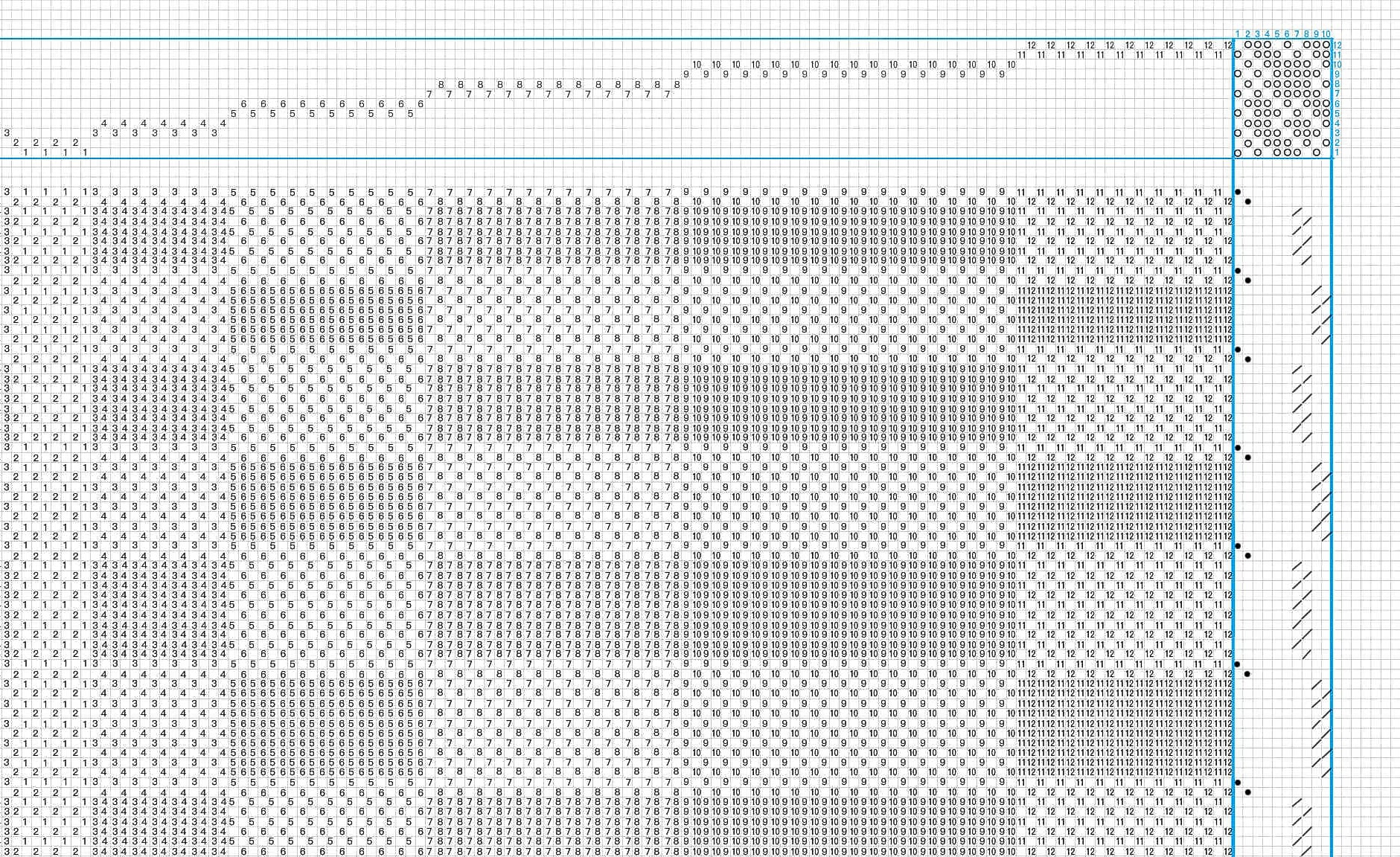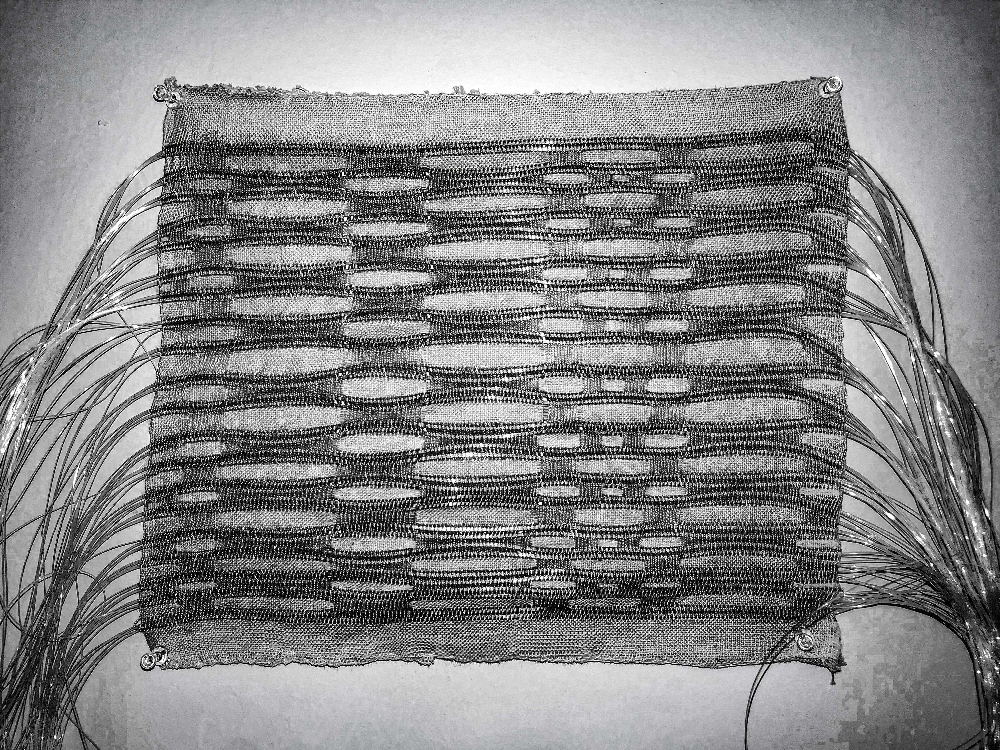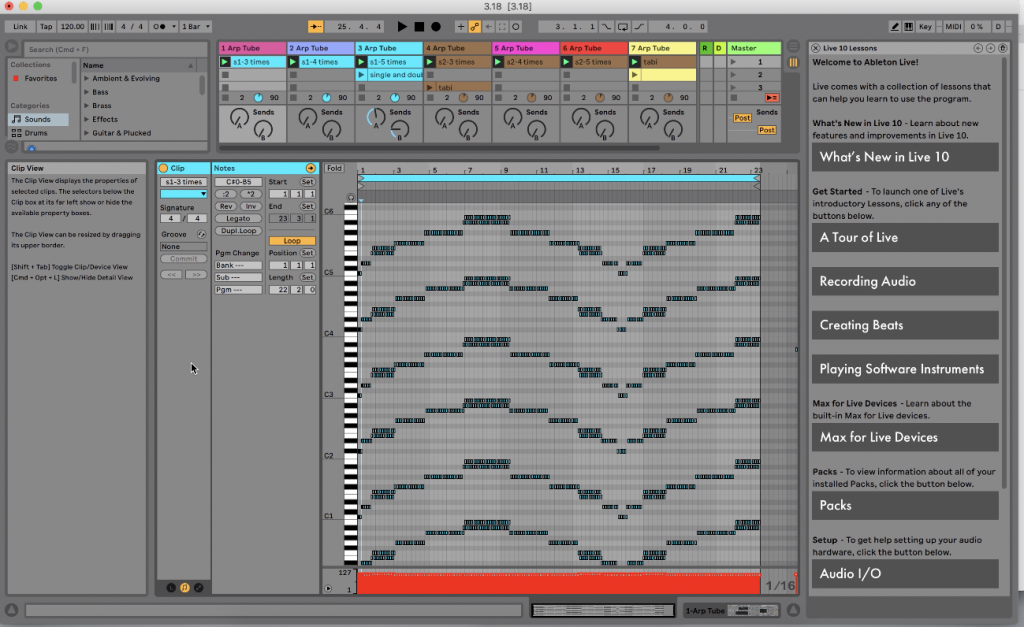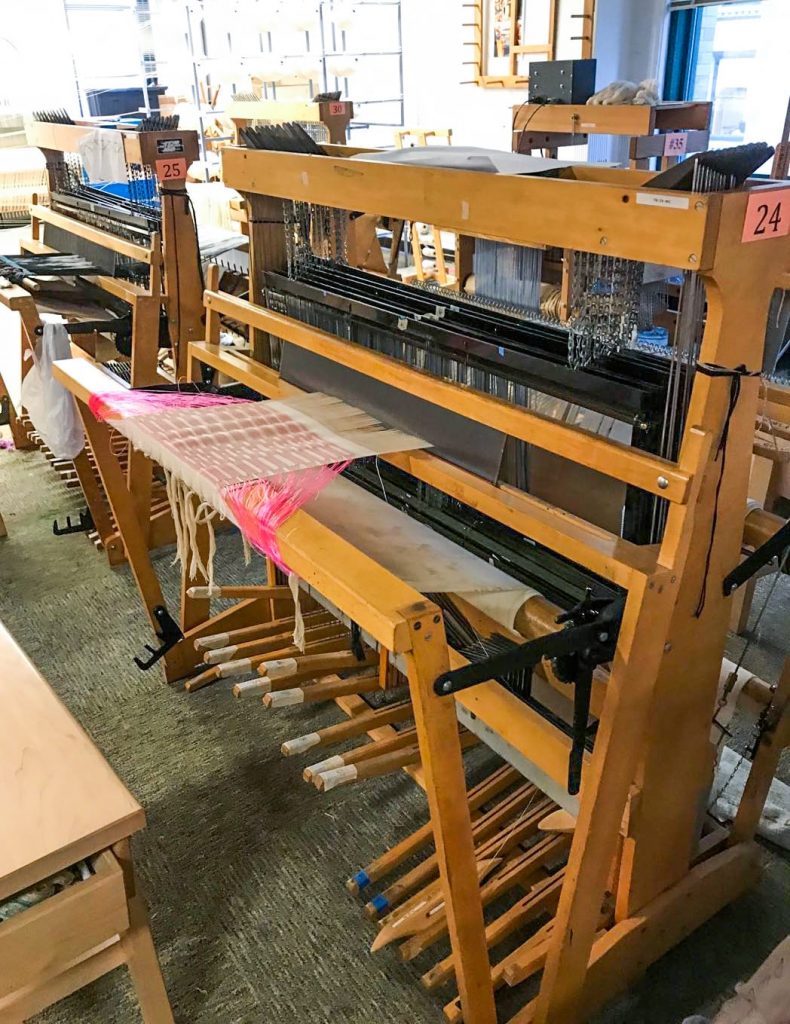The first project ‘The Symphony Behind the Fabric’:
This project explores the woven fabric as a map, and as a score; linking it through time, labor, sound and space. The music is created entirely by the structure of woven fabric. The structure includes different numbers of harnesses, tie-ups and orders to hit the treadle. To create different patterns of the fabric, a weaver must need to setup the warp for the loom, design the tie-up box, and confirm the order that their feet hit the treadle. And this form of structure can be written in numbers, translated into a musical score and then “weaved” into a piece of music. The music hidden in the cloth represents the labor performed by the weavers, so the score here is the evidence of intense labor.
The intention of this project is about to explore the relationship of sound and weaving, virtual/abstract and physical, technology and tradition, new and old. It is about how fabric provides a new way to manipulate sound and how to expand our listening ability. It developed a new composition technique and open a doorway for listening to the wider community
As I spent more time in the weaving studio, I noticed that there is both visible and invisible labor involved in the process. In order for a weaver to create a piece of fabric on the floor loom, they need to step on the treadle with their feet, and also shuttle back and forth with their hands. The process is very similar to create music with a piano. This led me to start thinking about the transition between labor and music, and the transition between weaving and music. How does music get visualized with fabric? If labor is invisible, do we imply that it does not exist? How can we represent time-consuming labor into music?
Murray Schafer talked about ‘flat line’ in his book Tuning the World. The flat continuous line in sound has been everywhere in our world since the industrial revolution. The ‘flat line’ represent continuous sounds whereas the majority of sounds were interrupted in our early society. The flat line was extended to give the pitched tone after the electric revolution as well. Moreover, I also became fascinated by the visualized paper score, which was developed in the Polish Experimental Sound Studio. The score became visualized by drawing and lines, with the lines representing standardized, continuous time. Meanwhile, the woven fabric was woven thread by thread, line by line, and this included countless hours and labor, so the thread here also became the evidence of time. Thus, to me the concept of ‘flat line’ is pretty similar to the yarn used to weave, they both represent continuous time.
The second project ‘The Rhythm Behind the City’:
In the 1960s in Japan, the ” Shinchintaisha (Metabolism)” movement emerged. The movement emphasized the importance of architecture growth, changes, and decline in architectural design. This work explored about reconstruction and deconstruction of visual and tactile, haptic cinema, abstract film/ direct animation and the early architecture movement. It encoded photographs of some patterns that are common in an urban environment into woven fabric and then decoded the fabric into the woven video. Direct animation is an animation technique where all footage is produced by creating the images directly on film stripe and there are no breaks between frames, which is pretty much the same way I transferred the woven fabric into the woven video, so the woven fabric becomes the ‘filmstrip’ of the videos, and the body of the video. According to concepts of ‘haptic cinema’, we use our vision as a sense of touch; film/video can be conductive like our skin. The woven video has both visual and tactile sensory. It also talks about the purest elements in film and weaving, which including motion, rhythm, harmony, and color. How could these elements of weaving and film mix with each other?



